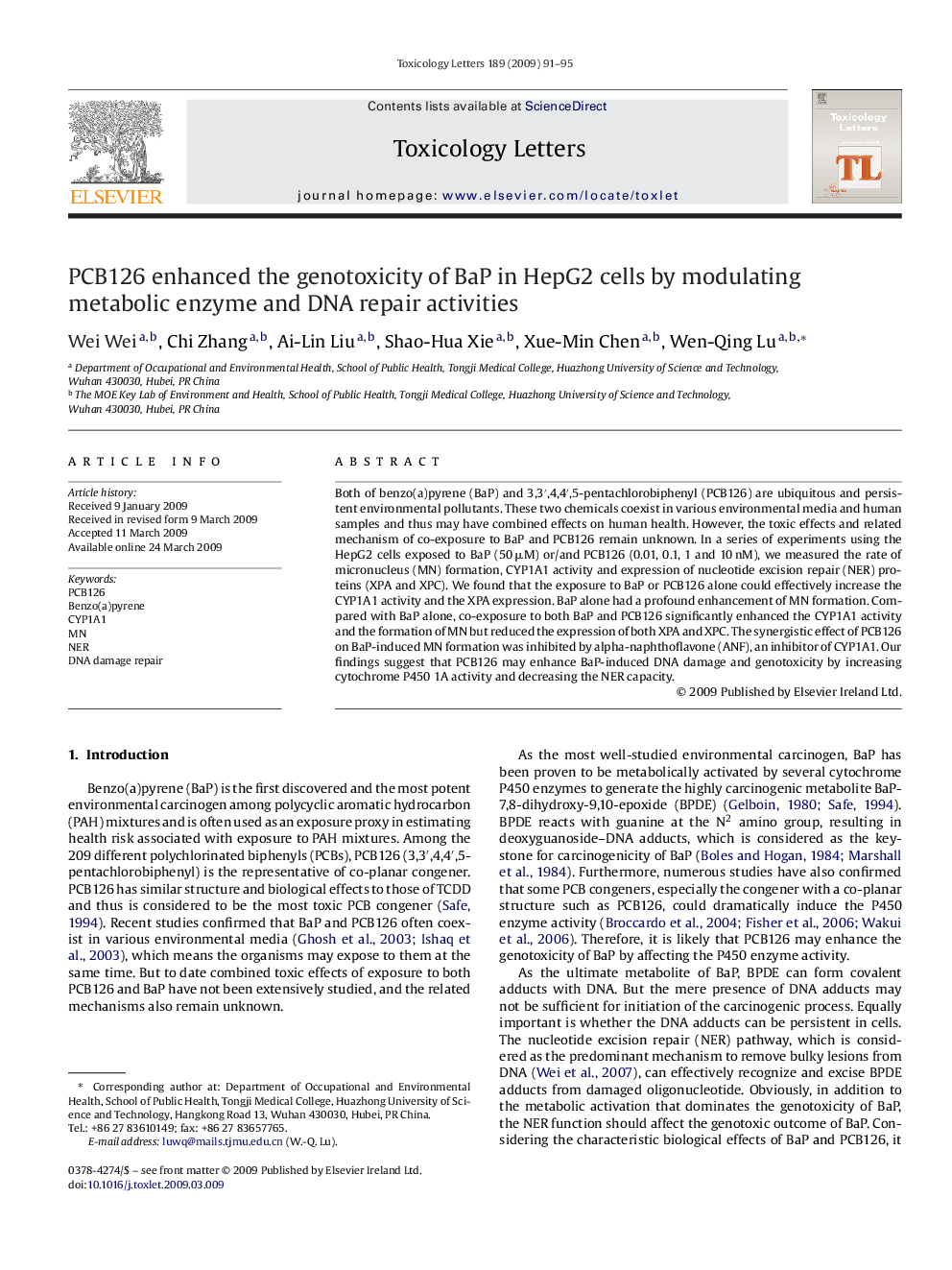| کد مقاله | کد نشریه | سال انتشار | مقاله انگلیسی | نسخه تمام متن |
|---|---|---|---|---|
| 2600937 | 1133290 | 2009 | 5 صفحه PDF | دانلود رایگان |

Both of benzo(a)pyrene (BaP) and 3,3′,4,4′,5-pentachlorobiphenyl (PCB126) are ubiquitous and persistent environmental pollutants. These two chemicals coexist in various environmental media and human samples and thus may have combined effects on human health. However, the toxic effects and related mechanism of co-exposure to BaP and PCB126 remain unknown. In a series of experiments using the HepG2 cells exposed to BaP (50 μM) or/and PCB126 (0.01, 0.1, 1 and 10 nM), we measured the rate of micronucleus (MN) formation, CYP1A1 activity and expression of nucleotide excision repair (NER) proteins (XPA and XPC). We found that the exposure to BaP or PCB126 alone could effectively increase the CYP1A1 activity and the XPA expression. BaP alone had a profound enhancement of MN formation. Compared with BaP alone, co-exposure to both BaP and PCB126 significantly enhanced the CYP1A1 activity and the formation of MN but reduced the expression of both XPA and XPC. The synergistic effect of PCB126 on BaP-induced MN formation was inhibited by alpha-naphthoflavone (ANF), an inhibitor of CYP1A1. Our findings suggest that PCB126 may enhance BaP-induced DNA damage and genotoxicity by increasing cytochrome P450 1A activity and decreasing the NER capacity.
Journal: Toxicology Letters - Volume 189, Issue 2, 10 September 2009, Pages 91–95